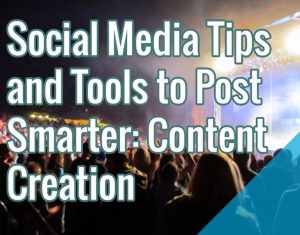LinkedIn changes its paid membership offerings quite often, and they don’t come cheap. As a LinkedIn writer, I give the career professional information needed to make this decision. To determine if it’s worth the cost, it’s important to understand what comes with a basic, free membership, and which tools are available exclusively through LinkedIn Premium Business.
Several years ago, free account holders had access to more features than they do today. This doesn’t mean, however, that everyone needs a LinkedIn paid membership to complete their job search successfully.
What is certain—and might surprise you—is how LinkedIn’s services have developed. Even if you researched the Premium tiered memberships a year ago, a lot has probably changed since you last visited the topic.
Free Features on LinkedIn
A basic account lets you build your profile and network. You can make or request recommendations and receive (but not initiate) “InMail” messages, which function similarly to email or direct messaging. Without paying a dime, you can also save up to four customized job searches and set up weekly alerts.
Features on LinkedIn Premium Business
For just shy of $ 50 a month, you have access to four additional features:
-
View visitors on your profile page.
Free account holders can only see the five most recent viewers in the last 90 days. Premium members see everyone who has viewed their profile and then review an analysis report to learn how viewers located their profile. As long as the viewer has a public profile, you can see where they work, their job title, and how they found you.
This is invaluable information! It can easily lead to more connections in your network—after someone views your page, send a connection request with a personalized note thanking them for visiting your profile. From there, they will probably accept your request and initiate a dialogue.
LinkedIn will also measure how many people visit your profile, which can help you evaluate if your LinkedIn activity builds engagement. By evaluating traffic to your LinkedIn page, you can adjust your routine—for example, posting more frequently on the LinkedIn timeline or recalibrating the keywords that appear on your page.
-
Open profile as default.
“Open Profile” is the default mode if you’re a Premium user, which means any LinkedIn member will see your entire profile and can contact you. Even if the viewer isn’t in your network or has a free account, they can initiate a conversation if you have a Premium account.
For job seekers who want to cast a large net or don’t have an extensive network, having an open profile is a huge value add. It facilitates first-time connections with new contacts. This can be quite beneficial in many careers. It is certainly beneficial to me as a professional LinkedIn writer.
-
Opportunities for continuous learning.
LinkedIn Learning is an online educational platform with over 10,000 courses on business, technology, and creative development. Taught by industry experts from around the world, courses are offered in English, Spanish, German, French, Japanese, Mandarin, and Brazilian Portuguese.
In addition to providing valuable insight, LinkedIn Learning also allows users to add course certifications to their profile. Once you complete a course, you can add it to your public profile to showcase your experience. Participating in online classes helps boost your credibility to employers and demonstrates that you’re invested in improving your skills.
-
InMail
When you pay for LinkedIn, you receive 15 InMail credits monthly. As of today, you can accumulate InMail credits that you don’t use, and you can recover a credit if you sent an InMail message that was ignored.
Free account holders can only receive messages—under normal circumstances, they can’t send them.
There is a slight workaround, however. If you send a brief personalized note as part of a connection request, you can amplify the impact of your first interaction. If the person accepts your connection request, you can message them directly because they’ll be in your network. This tactic effectively bypasses the direct messaging limitations altogether—but it hinges on convincing a stranger to accept that initial request to connect.
Is LinkedIn Premium Worth the Membership Fee?
While LinkedIn Premium Business doesn’t come cheap, the extra features could be worth it worth it to you, depending on your goals. Many users can bypass hiring gatekeepers by using InMail, which can be more effective than email. You won’t need to hunt down a direct email address or risk having your message filtered into a spam folder. It’s also one of the simplest ways to attach concrete data to your job search—empowering you to make more informed decisions about where to invest your time.
Making a genuine, human connection is invaluable, but the strength of a LinkedIn membership hinges on your ability to optimize your account. If you understand how to leverage quantitative data and initiate conversations in writing, LinkedIn can be one of the most important resources for your job search. As a professional LinkedIn writer, Premium works for me and now you can decide whether or not it works for you. Fortunately, most users can test the waters by enrolling in a free trial period.
Previously appeared on IvyExec.com
Digital & Social Articles on Business 2 Community
(33)







